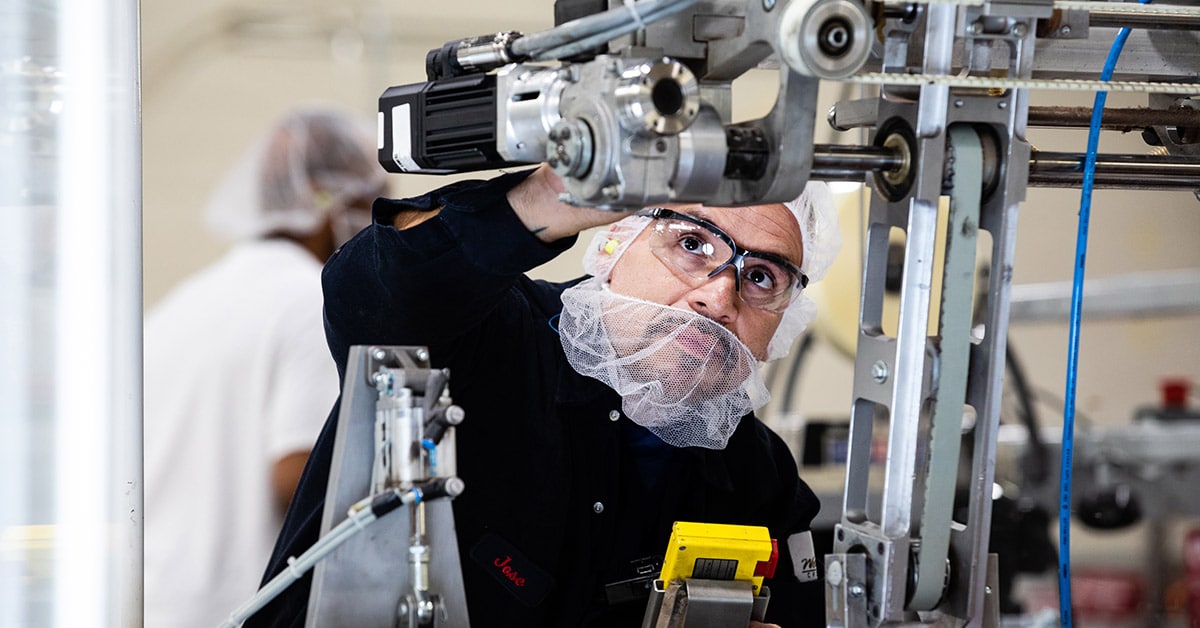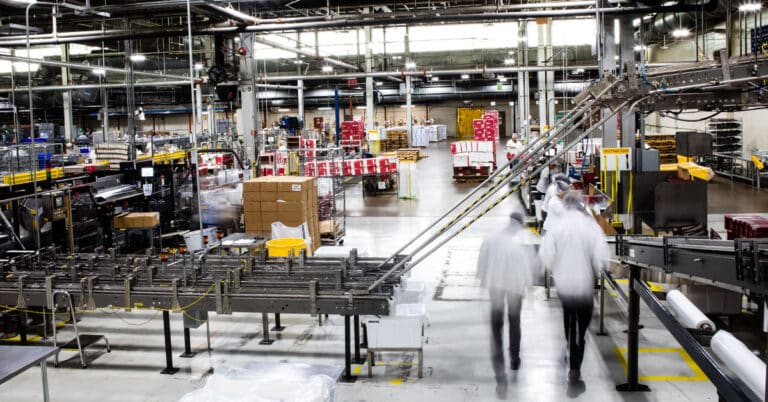Minimizing unplanned downtime should be a priority in every manufacturing plant. It’s disruptive and expensive, it leads to accidents, and it causes a lot of waste. This blog explores the topic of machine downtime and gives readers some tools for finding and addressing the root causes. It looks at how and why to measure downtime, discusses the benefits of driving it down (especially unplanned downtime), and reviews the benefits to be realized.
What is machine downtime?
Downtime refers to any time when production equipment is not available to run, but there is work for it to do. It is not the same as idle time, which is when there is no work for the equipment or line to do.
Machine downtime gives supervisors and managers fits because it reduces available capacity. That can mean it takes longer to get an order out, that overtime work is needed to stay on schedule, or a combination of the two.
However, not all downtime is necessarily bad. Downtime splits into two types:
- Planned downtime: This is where time is made available in the production schedule for tasks such as machine inspections and maintenance. Cleaning and operator training are other reasons for planning downtime. The key point is that this time is predictable and agreed in advance.
- Unplanned downtime: This is when a machine or other piece of equipment stops unexpectedly. It’s always disruptive. It leaves workers and other machines standing idle, and it delays orders. As a result, it’s also expensive.
Common causes of unplanned machine downtime
The root cause of most instances of unplanned downtime can be assigned to one of four categories:
1. Equipment failures: This is when a key component stops working. It could be because of dirt or contamination, overheating, seizing, or breakage. Causes can include clogged filters and breaking belts.
2. Lack of maintenance: Machine components rarely fail without warning or detectable degradation. An effective preventive maintenance program involves scheduling inspections, servicing and component replacement to prevent failures.
3. Operator errors and/or lack of training: Many machine breakdowns result from mistakes made by operators. This could be something like loading a part incorrectly, leaving a tool or material in the wrong place, pressing a button at the wrong time, or pressing the wrong button. One of the goals of work instructions, standard operating procedures (SOPs) and operator training is to prevent such errors.
4. Supply chain issues: Not having spare parts available can cause and prolong unplanned downtime. If a part isn’t on the shelf when inspection reveals it’s needed, unplanned equipment downtime becomes much more likely. If the part must be ordered, the downtime could be prolonged. This emphasizes the importance of putting in place a good spare parts inventory management system.
How to calculate machine downtime
Downtime is expressed as a percentage of the time for which the machine, line or process was expected to run.
The formula is:
Downtime (%) = [(Hours the equipment is down)/(Planned operating hours)] x 100
As an example, consider a filling line scheduled to run 80 hours a week. If five hours are lost due to an unplanned stoppage (perhaps a belt failed in a capper, leading the machine to jam), the downtime calculation is:
(5/80) x 100 = 6.25%
An effective way of alerting management to the importance of tackling unplanned downtime is to express it in financial terms. This could involve expressing the lost output as revenue, estimating the cost of nonproductive labor, or determining the cost of any overtime needed to recover the schedule.
Measuring and tracking machine downtime
Downtime can’t be addressed until it’s been quantified. This also provides a way of determining whether actions taken are making the situation better or worse.
Downtime indirectly forms part of the OEE calculation used to measure how well a business is utilizing its productive assets. It figures in the Availability component, calculated as (Run Time / Planned Production Time).
Downtime measurement involves logging the status of machines throughout the working day. However, it’s not enough to know whether a machine is running or not running as downtime could be due to planned reasons. Instead, it needs some investigation, of the operators or the equipment itself, to determine exactly what is occurring.
Some plants have long used manual logging methods. In some cases, this is called random activity sampling, and it requires someone to go around with a clipboard and make notes on the status of each item being monitored.
There are several problems with this approach:
- Low granularity: With a sampling approach it’s quite possible to miss shorter periods of downtime.
- Low resolution: There’s little-to-no information about the precise cause of any downtime observed.
- Inaccurate data: Recording and transcription errors are easily made, and the person doing the logging may be given incorrect information or wrongly categorize what he or she is told.
Automated machine downtime tracking overcomes all these problems. There are various sensors and systems that make this possible.
How to reduce machine downtime
Machine downtime data only becomes useful when put to work in downtime reduction efforts.
Here are five actions to take:
1. Regular and well-documented preventive maintenance: Perform inspections and servicing as recommended by the equipment manufacturers. Keep records of work done, reviewing and adjusting frequencies as needed.
2. Use predictive maintenance technologies and condition monitoring sensors: Predictive maintenance is about determining when maintenance should be carried out to prevent a breakdown. It involves predicting when components or systems will fail and doing the preventive work necessary just before this happens. It’s a way of using sensors to eliminate unplanned downtime through implementation of machine health monitoring.
3. Ongoing training: Ensure operators understand and follow SOPs. This should include refresher training as well as new hire training. Develop training plans and ensure progress and attainments are recorded.
4. Maintain sufficient spare parts inventory: While there’s often pressure to reduce spares inventories these are essential for reducing downtime. However, a review of lead time and availability, perhaps by equipment criticality, may identify opportunities for targeted reductions, and possibly needed increases.
5. Invest in a CMMS: A computerized maintenance management system automates much of the work involved in planning and scheduling maintenance activities. It holds records on all the equipment installed and helps optimize preventive activities. It can also handle spares management and integrate with predictive maintenance tools.
Impact of downtime in manufacturing
Planned downtime consumes production capacity and should be minimized as much as possible. However, the real villain in terms of impact is unplanned downtime, which, by its nature, is unpredictable. This has:
- Financial impacts
- Productivity impacts
- Long-term effects on operations
The financial impacts of production downtime are lost revenue, (and hence profit), and increased costs. The cost penalty arises from paying people while they have no work to do, paying for overtime work to recover lost output, and lost or wasted material.
Unplanned downtime hits production and maintenance productivity. Production suffers because people have no work and material is often scrapped. Maintenance productivity is impacted because technicians are called to attend breakdowns rather than carrying out preventive maintenance.
Long-term effects include reduced morale (which affects employee turnover and increases training costs) and reduced asset life. There’s also an increased risk of accidents when people attempt to fix problems themselves without taking proper precautions. Compounding this, lower ROI means less money available for investment in new equipment.
Professional support for industrial maintenance
Eliminating unplanned maintenance should be a priority in every manufacturing operation. However, it’s important to drive down all downtime, as this delivers many benefits. ATS offers a range of services to help manufacturers improve asset maintenance effectiveness.
This ranges from equipment downtime tracking to quantify the problem to MRO management and predictive maintenance services. Contact us for more information.


